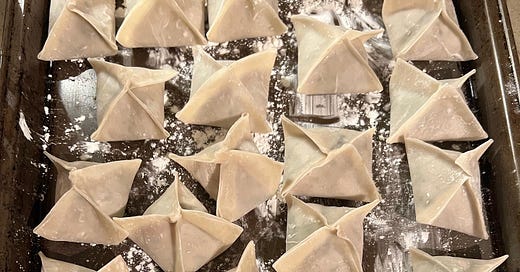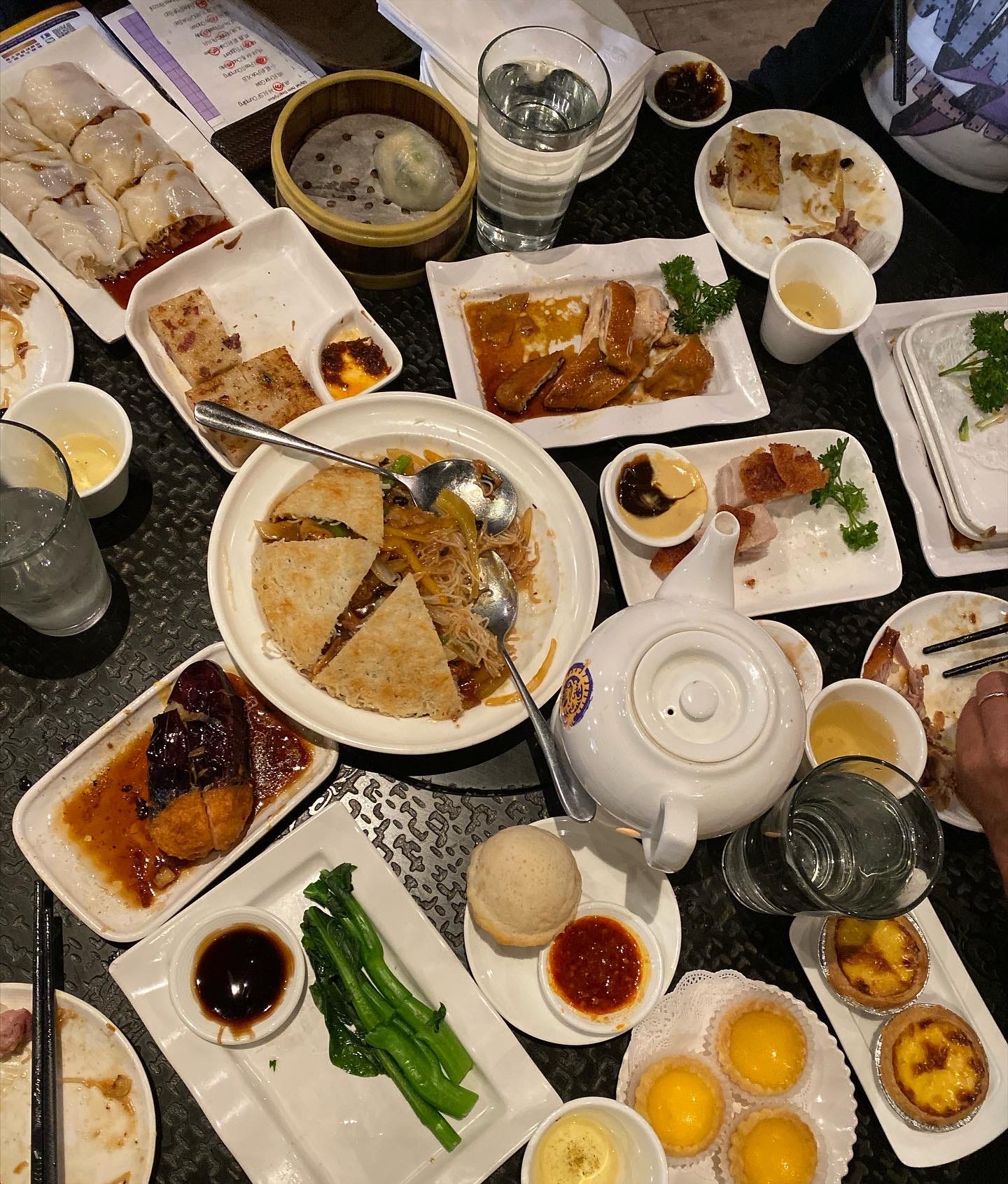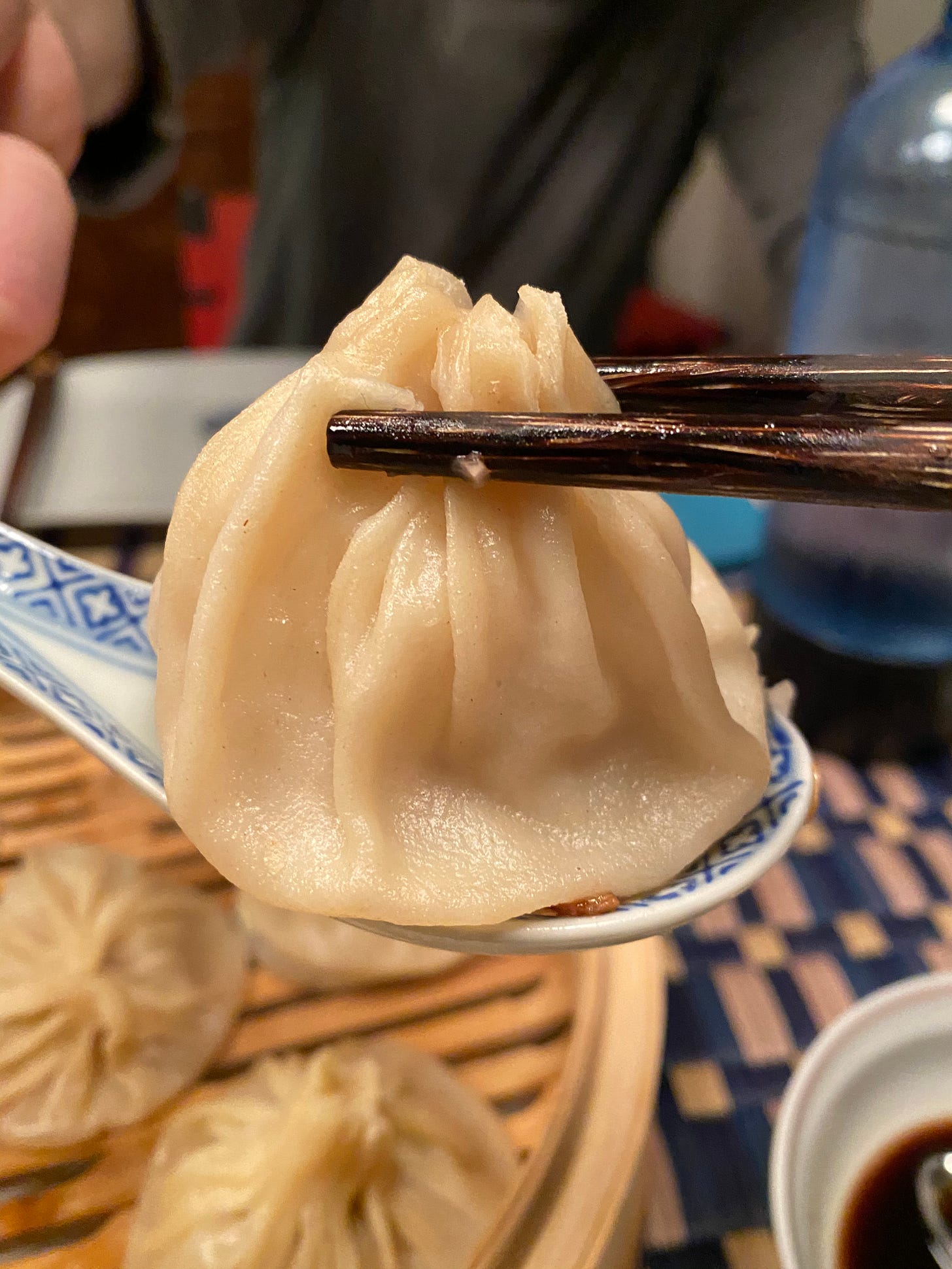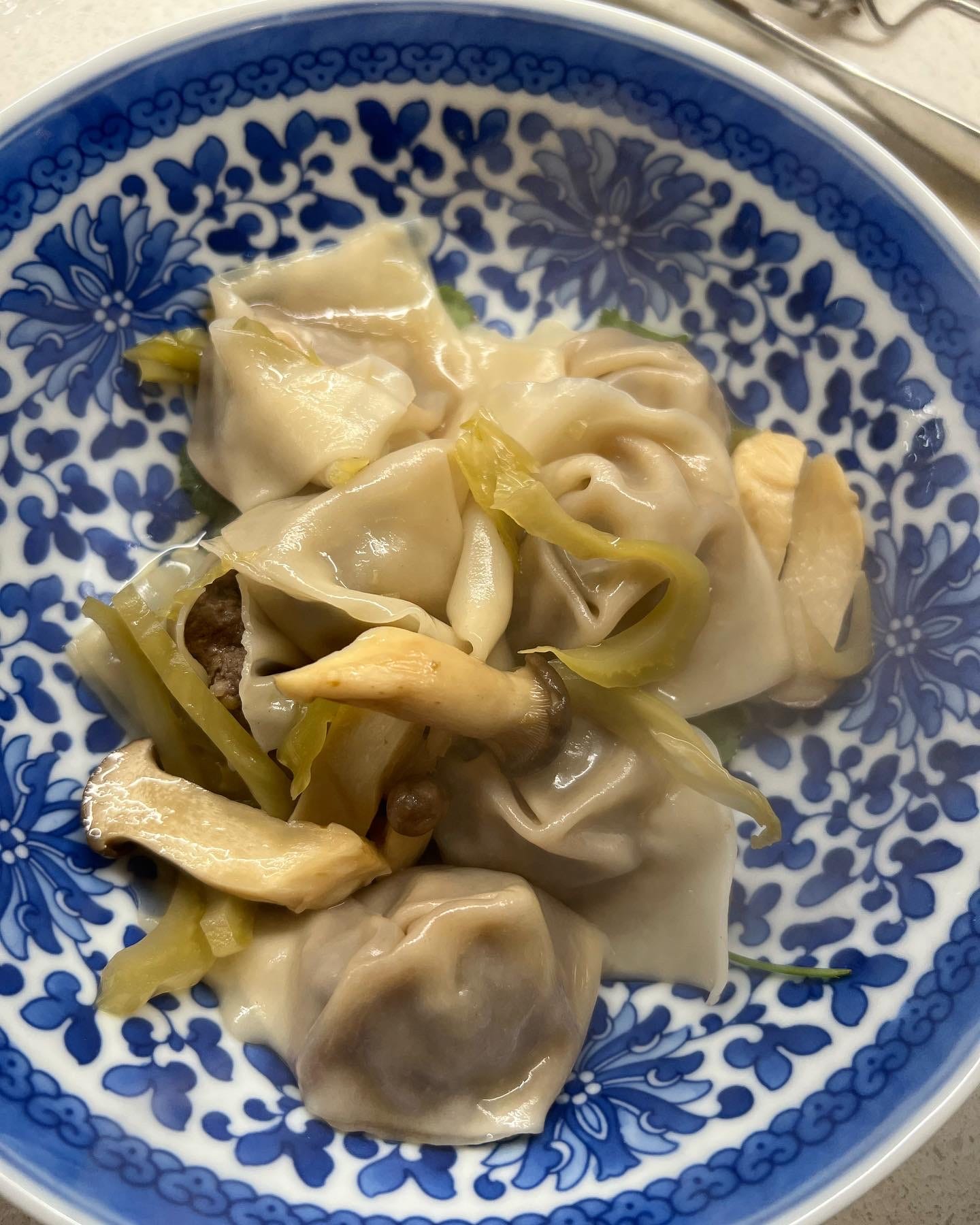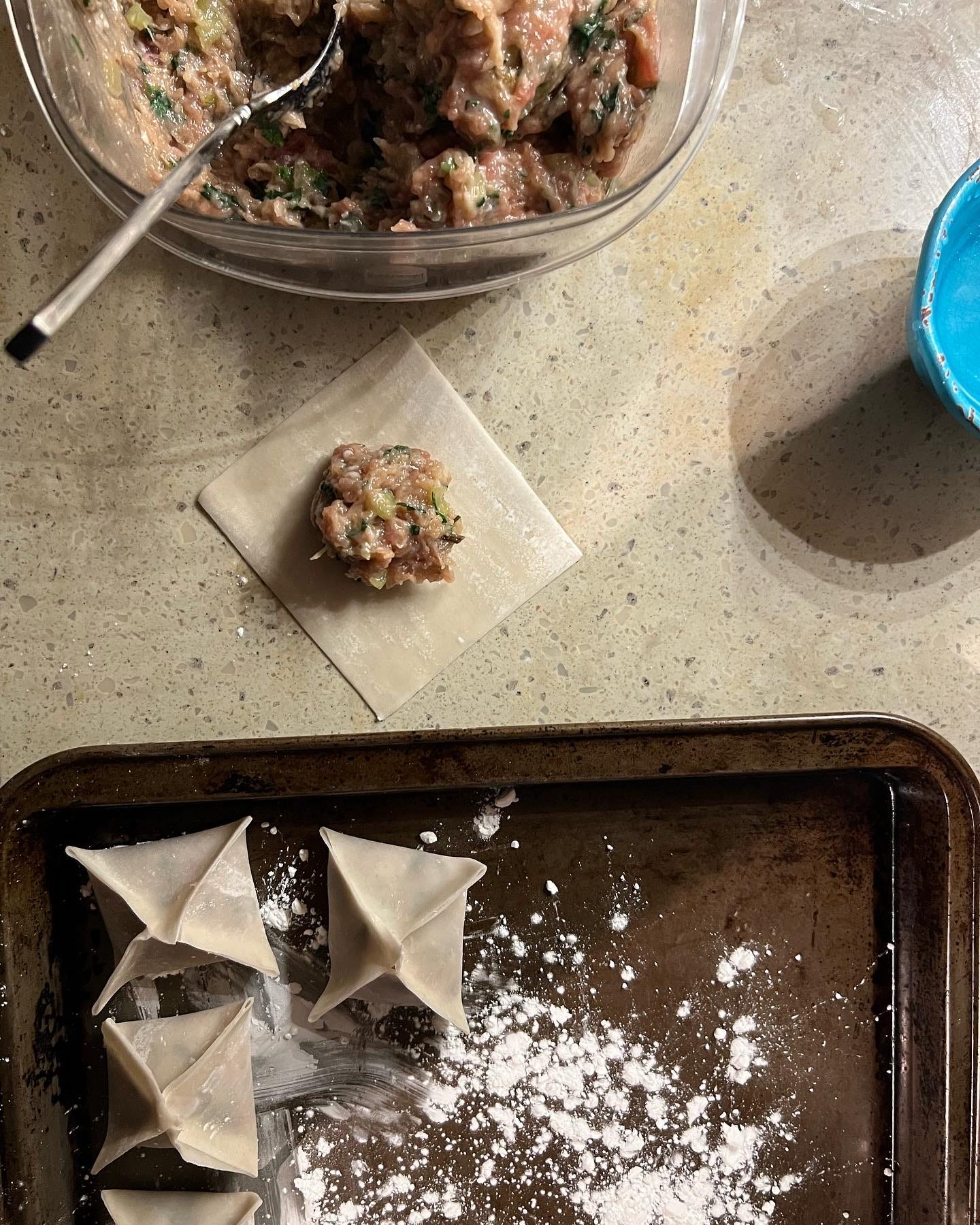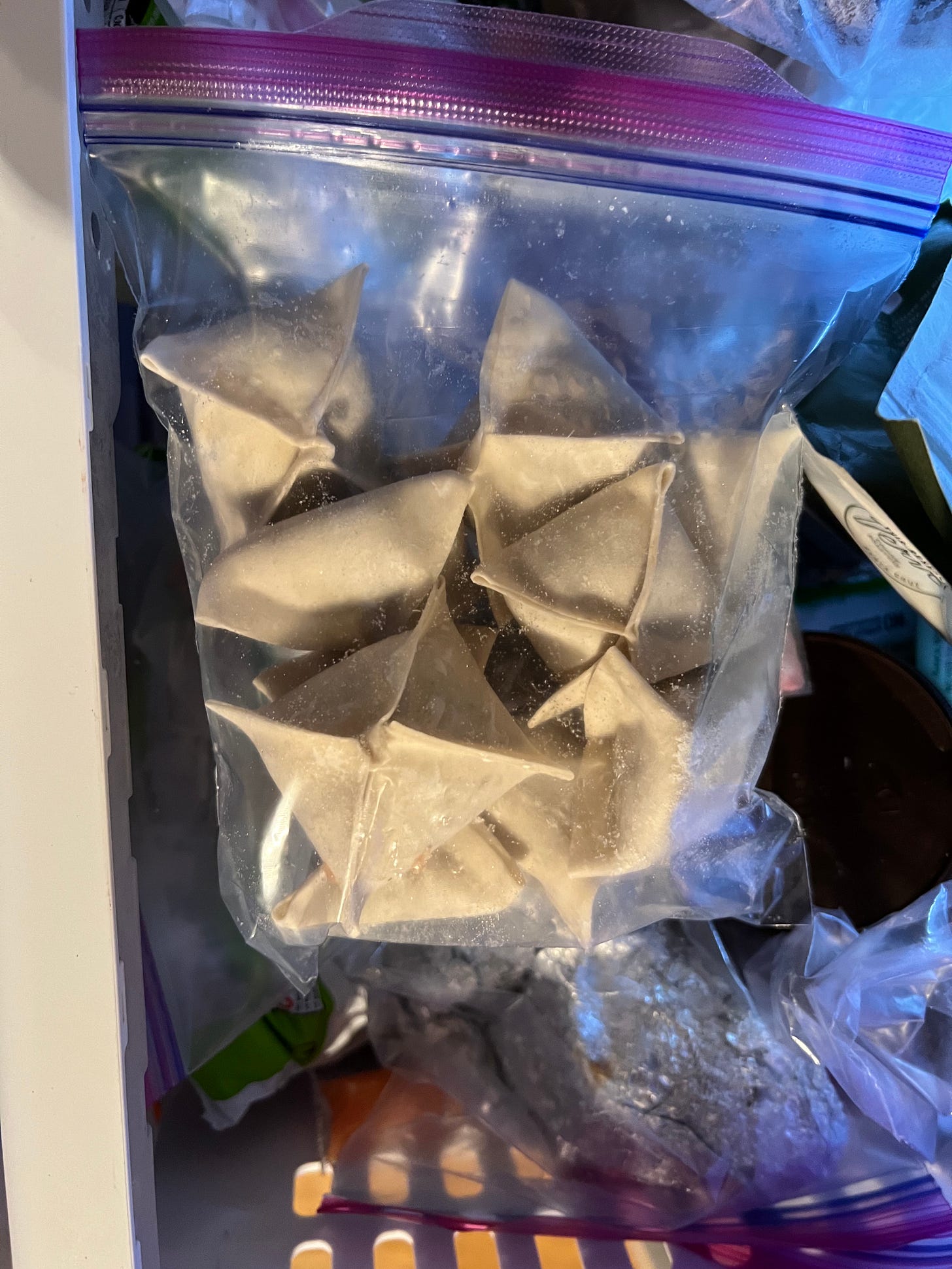Dumpling Crazy: The Shape of Potstickers to Come
A Go-To Filling for Chinese Dumplings, Polyhedron Folds, The Best Dipping Sauce
Hi, Issue #34. The initial motivation for me to start this newsletter was that I began posting recipes to accompany my photos on Instagram, but I often ran out of room due to the platform’s character limit (2,200 btw). I’ve always had a problem with food publishing’s pressure to keep recipes as short as possible. While I understand that seeing pages and pages of method can be intimidating, often the details you leave out make the recipes harder to replicate, not easier. Legendary editor Judith Jones famously allowed Julia Child’s French bread recipe in the original Mastering the Art of French Cooking to run on for 20-plus pages and it didn’t hurt either of their careers. What’s more, I bet it enabled more people to make a decent French bread! But I digress. I decided on the recipe for this week’s issue because I got several comments on my Instagram post about how cool these dumplings looked and because they were super easy and delicious. I hope you try them! —Mitchell
Have I ever had my fill of Chinese dumplings? I’m not certain. I’ve been stuffed, for sure. But I don’t think I’ve ever reached the point where I couldn’t eat just one or two more. Usually, I stop because of a combination of guilt and shame. I’ve been known to impress servers in dim sum restaurants with my capacity to consume and to surprise the guests dining with me when the check tallies somewhere near triple digits. At the beloved Dumpling Galaxy in Flushing, Queens—where the menu proposes no fewer than 89 savory varieties of dumpling—I typically order multiple half-dozens so I can have my favorites (pork with shrimp, egg, and chives and/or lamb with green squash), and still try a few new ones. I tell myself I will take the ones I don’t eat home. I’ve never left with a doggy bag.
It has taken the pandemic for me to realize that making dumplings at home from scratch, even the wrappers, is not such a big deal, especially for just the two of us, or at most, the four in our pod. At first I focused on potstickers. Then, for a while I was obsessed with Shanghai soup dumplings. Both require you to roll thin circles of dough which you pleat around various fillings. The first few attempts may not have been perfectly shaped, but they were still delicious. And then after a while, once my fingers got used to the pleating, the dumplings begin to emerge more perfect.
The other day, though, I drifted in the direction of wontons. This was a sort of compromise I worked out in my head with my husband, Nate, who had requested kreplach. When I was a kid, kreplach—which are Ashkenazi soup—were always made like wontons, only they were stuffed with some combination of leftover brisket and chicken liver. I had no brisket on hand. I know Nate didn’t want liver. And I was in the mood for a Chinese soup. To make speedy work of the wontons, I bought the wrappers. But I only needed a few. And as you might expect, I hated to throw out the rest.
Contemplating what to do with them, I pivoted back to potstickers. But these store-bought wrappers posed a geometry problem. I had learned to fold dumplings from round wrappers. What would I do with a square? I thought of punching circles out of them, but that seemed too wasteful. So, I poked around the Internet and found a cool pyramidal polyhedron fold (my wording). Turns out, this fold is both more impressive (if only because it is less common) and easier than a traditionally pleated dumpling. It is also a hit on Instagram.
I’m sharing my go-to Chinese filling for dumplings, which can be used in any wrapper, of any shape, whether homemade or bought. I used a combination of ground pork and chicken the other day because I had some chicken to use up, and I liked the texture of the filling, which was lighter than when I use all pork. But an all-pork dumpling is great, too. (Don’t try this for kreplach, however.)
As for the folding, I explain how to make my pyramids so you can impress your family and friends. The internet is full of really good videos about how to fold other shapes. Check out one of my favorite sites, The Woks of Life for a tutorial.
RECIPE: All-Purpose Chinese Dumplings
(Makes about 45 dumplings)
Small bunch (about 6 ounces) leafy Chinese greens, such as bok choy, gai lan (Chinese broccoli), or napa cabbage), soaked in abundant cold water to remove any sand
8 ounces ground pork
8 ounces ground dark-meat chicken or additional ground pork
1 handful Chinese chives (aka garlic chives) or scallions, finely chopped
3 tablespoons Shaoxing wine or dry sherry
3 tablespoons chicken or vegetable stock
1 tablespoon toasted sesame oil
1 tablespoon scallion or garlic oil
1 tablespoon light soy sauce
Freshly ground white pepper
Pinch salt
½ package square wonton wrappers (about 45)
Bring about an inch of water to a boil in a medium saucepan. Drain the greens, place in the saucepan, cover, and let cook for about 4 minutes, until wilted. Remove from the heat, drain, rinse in cold water, and drain again. Finely chop. Place in a medium mixing bowl.
To the same bowl add the ground pork, chicken, chives, Shaoxing wine, stock, sesame oil, scallion oil, soy sauce, white pepper, and pinch of salt. Using a pair of chopsticks or the handle of a wooden spoon, stir this mixture in a clockwise direction until the ingredients are well blended and all of the liquid has been absorbed. If it looks like it isn’t coming together, don’t worry, and just keep stirring in the clockwise direction. It will eventually cohere into a light, well blended farce. I know this direction direction sounds hokey. But this is a traditional way to blend dumping filling and I find it works best to create a well-mixed, cohesive mass that incorporates all the liquid, which is key to making juicy dumplings that burst with flavor.
If you have the time, cover the bowl and allow the filling to marinate in the refrigerator for an hour or two or up to two days before filling your dumplings.
When you are ready to fill the dumplings, dust a sheet pan with cornstarch. Fill a small bowl with water. Dampen two dishtowels, one to cover the wrappers while you work to keep them from drying out, and the other to do the same for the filled dumplings.
Place one wrapper flat on the work surface. Using a soup spoon, shape a ball of filling of about 1 ½ tablespoons against the side of the bowl. Place the filling in the center of the wrapper, trying not to have any stray filling or even a schmear extend to the edge (which makes sealing them more difficult). With an index finger dipped in your bowl of water, moisten all four sides of the wrapper. Now, pick two opposite corners up over the filling and pinch the points to hold together. Now bring up each of the other points to meet it in the middle, being sure that the edges of the dough don’t fall inward, but instead meet to form an outward facing seam. Pinch the four points and the top together and then press them seams together all the way down, making sure you do not see any gaps. That’s it. Place the dumpling on the prepared sheet pan and repeat. Make sure that the dumplings don’t touch or they can stick and then tear open when you try to separate them. Repeat until the filling or the wrappers run out.
At this point, you can freeze the tray until the dumplings are solid and then gather them in a sealable bag to cook whenever you want them (directly from the freezer).
To cook, Heat a large frying pan, preferably nonstick or well-seasoned cast iron with a tight-fitting lid, over medium high heat. Add 2 tablespoons of peanut or netural vegetable oil. Once hot, arrange the dumplings in the pan, again, close but not touching. Allow the dumplings to fry for 6 or 7 minutes, until the bottoms begin to brown. Now, take about ½ cup of water and pour it into the pan all at once. Cover quickly to catch the steam. Keep tightly covered for about 5 minutes to cook through. Remove the cover. If there is still water in the bottom of the pan, keep cooking until it evaporates. (If you click through to my Instagram post below and swipe to the last slide you will see a video of these dumplings steaming.) Serve directly from the hot pan (a small offset spatula helps) with the best dumpling sauce (recipe below).
Half of the deliciousness of dumplings comes from the dipping sauce, imho. Here’s my favorite.
RECIPE: The Best Dumpling Sauce
1 teaspoon honey or sugar
1 tablespoon hot water
2 tablespoons light soy sauce
1 teaspoon black vinegar
1 teaspoon chili oil, with sludge
1 small clove garlic, grated on a microplane
1 teaspoon toasted sesame seeds
½ teaspoon toasted sesame oil
Combine all of these ingredients in a small bowl and whisk together. Serve a small individual so people can dunk their dumplings with abandon.
